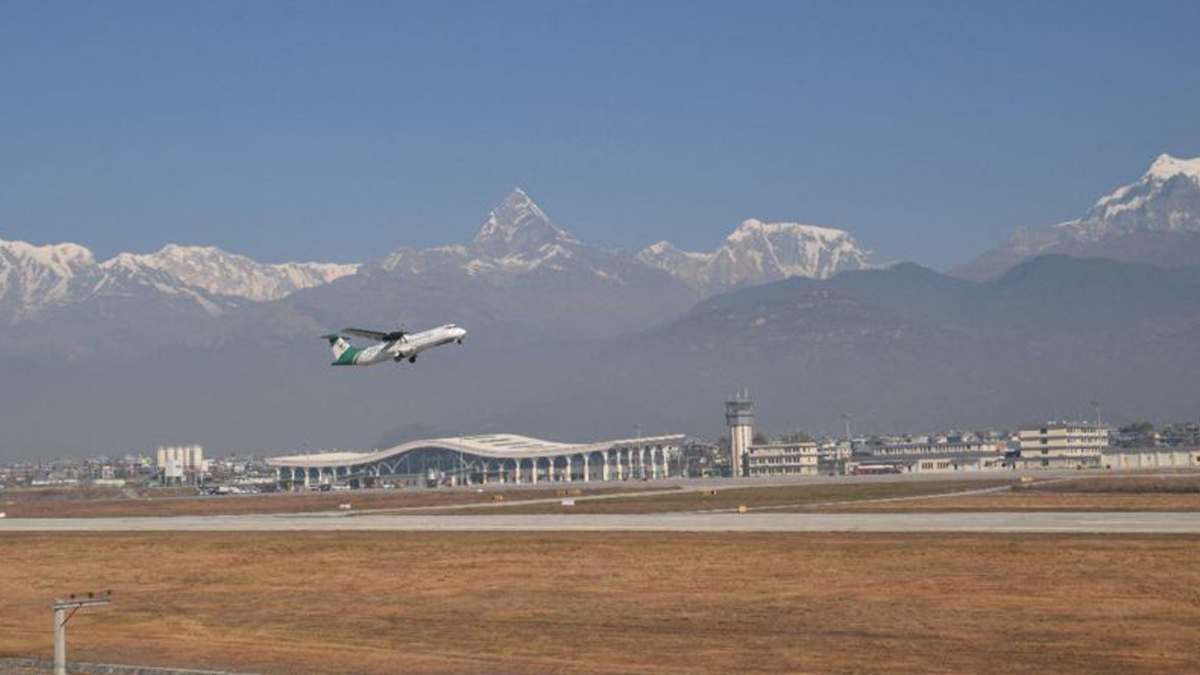
Mounting Hurdles and Uncertainties Surrounding PRIA’s Future
Pokhara and Gautam Buddha International Airports, funded by substantial foreign loans, are currently facing mounting concerns over their investment viability.
The Pokhara Regional International Airport, despite receiving a loan from the Chinese Exim Bank, has yet to commence international flights and is experiencing lackluster results with domestic flights.
Similarly, the Gautam Buddha International Airport, which received a loan subsidy from the Asian Development Bank, recently suspended its limited number of international flights. These circumstances have raised fears of the airports falling into a debt trap due to their reliance on foreign loan investments.
The Pokhara Regional International Airport, inaugurated with great fanfare on January 1, has so far failed to attract any international airlines. The airport, built with Chinese loan investment, has been limited to serving domestic airlines. Unfortunately, its reputation suffered a blow when a Yeti Airlines aircraft crashed in Pokhara shortly before landing at the airport on January 15. With a total investment of around 22 billion, the airport’s construction took nearly seven years to complete after the foundation stone was laid. The Ministry of Finance secured a concessional loan from China’s Exim Bank, with 75 percent loan and 25 percent subsidy components. The government has already begun repayments on this loan, which needs to be paid twice a year. Spanning an area of approximately 4,000 ropani, the airport was envisioned as an alternative to the crowded Tribhuvan International Airport in Kathmandu.
While the runway of Pokhara International Airport spans 2,500 meters in length, with a width of 45 meters and a runway thickness of 34 centimeters, the airport has yet to operate effectively due to a lack of preparation. Culture, Tourism, and Civil Aviation Minister Sudan Kirati acknowledged this fact during a press conference held at the airport. Minister Kirati highlighted ongoing diplomatic efforts to establish flights from Pokhara to neighboring countries. Discussions have taken place regarding direct flights to various cities in China and India, particularly those with sister relations to Pokhara. The Ministry said that it had directed the Civil Aviation Authority to develop an action plan for the airport’s operation. However, these actions should have been taken before the construction phase. Tourism professionals in Pokhara have been demanding the prompt initiation of international flights.
Another major challenge faced by Pokhara International Airport is the presence of birds and wild animals. This issue, which was raised before the construction began, was unfortunately overlooked. The airport is situated near the Vijaypur and Seti rivers, which attract birds with discarded food and the presence of dead animals when the rivers are polluted. These factors pose significant challenges to flight operations and landings. Several months ago, a bird collided with a landing plane, underscoring the severity of the problem. Additionally, the nearby bushes are home to a large population of foxes, which previously caused disturbances by entering the airport premises at night.
Given that Pokhara International Airport is located in a prominent tourist hub, the government has the potential to reap substantial benefits. However, resolving the current challenges presents a formidable task. Dr. Govinda Raj Pokharel, former CEO of the National Reconstruction Authority, expresses concern over the possibility of international and domestic flights at the airport, particularly considering the persistent trade deficit and increasing public debt. The current situation raises doubts about the government’s ability to repay the loan using the airport’s income.
The analysts say that emphasis should be placed on more flights and cargo transportation. Due to the geography and location of the airport, only 150-seat Airbus 319, Airbus 320 and Boeing 575 aircraft can land here. That’s why there are various suspicions about the airport.
On December 31, a day prior to the inauguration of the Pokhara Regional International Airport (PRIA), the Chinese Embassy in Nepal proudly declared the PRIA as a prominent flagship project of China’s ambitious Belt and Road Initiative (BRI).
As these two airports grapple with their investment risks, urgent attention and concerted efforts are required to address the operational challenges and ensure their financial sustainability. The authorities must proactively engage in attracting international airlines, improving infrastructure, and addressing environmental issues. It is crucial to mitigate the risk of these airports becoming debt traps while harnessing their potential to foster economic growth and enhance connectivity in the region.













Comments